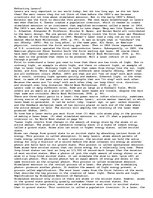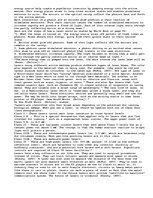"Laser light results from changes in the amount of energy store by the atoms in an active median. The atoms of a substance normally exist in a state of lowest energy, called a ground state. Atoms also can exist in higher energy states, called excited state.
Atoms can change from ground state to an excited state by absorbing various forms of energy. This process is called absorption. In many lasers, atoms absorb packets of light energy called photons. In most instances, the excited atom can hold the extra energy for only a fraction of a second before the atom releases its energy as another photon and falls back to its ground state. This process is called spontaneous emission.
Some atoms have excited states that can store energy for a relatively long time. These long-lived states can last as long as 1/1,000 of second-much longer than the duration of most excited states. When a photon of just the right amount of energy shines on an atom in a long-lived excited state, it can stimulate the atom to emit (give off) an identical photon. This second photon has an equal amount of energy and moves in the same direction as the original photon. This process is called stimulated emission.
Stimulated emission is the central process of a laser. One photon- the stimulating photon- produces another photon. It doubles the amount of light energy present, a process called amplification. The word laser comes from the first letters of the words that describe the key process in the creation of laser light. These words are Light Amplification by Stimulated Emission of Radiation.
Stimulated emission only occurs if there are atoms in the excited state. However, atoms in the ground state generally greatly outnumber those in excited states. For amplification to take place, more atoms of a substance must exist in excited states than in ground states. This condition is called a population inversion. In a laser, the energy source help create a population inversion by pumping energy into the active medium. This energy places atoms in long-lived excited states and enables stimulated emission to occur. The mirrors in the optical cavity reflect the photons back and forth in the active medium.
…
Refracting Lasers?-i wrote this for 8th grade science fair. its about lasers basically.


